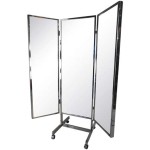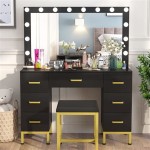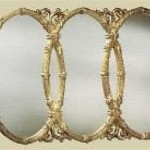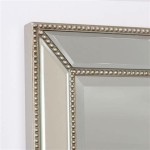How To Turn a Mirror Into a Window
Mirrors, typically used for reflection, can be repurposed to create the illusion of a window, significantly altering the ambiance and perceived spaciousness of a room. This transformation is particularly useful in areas lacking natural light or offering undesirable views. The process involves careful planning, selection of materials, and precise execution to achieve a convincing and aesthetically pleasing result.
The effect of a mirror-window hinges on creating a visual deception—convincing the observer that they are looking through a real window onto another space. This involves simulating elements typically associated with windows, such as frames, mullions (dividers within the window), and a believable view. The level of realism pursued will dictate the complexity of the project and the required skill level.
Choosing the Right Mirror and Frame
The selection of the mirror itself is a crucial first step. Size is paramount. Consider the desired scale of the "window" and how it will relate to the surrounding wall space. Larger mirrors will naturally create a more impactful illusion of spaciousness, but the size must also be appropriate for the room. A disproportionately large "window" can appear unrealistic and overwhelming.
Shape options extend beyond the standard rectangle. Arched mirrors, for instance, can lend an elegant or classical touch. Round mirrors, though less common, can be incorporated to create a porthole window effect, particularly suitable for nautical-themed rooms or bathrooms. Consider the existing architectural style of the room and select a mirror shape that complements it.
The frame is equally important. It is the frame that truly transforms the mirror into something resembling a window. Options are plentiful, ranging from simple, minimalist frames to elaborate, ornate designs. The choice should align with the overall aesthetic of the room. A rustic, farmhouse-style room might call for a frame made of reclaimed wood, while a modern, minimalist space might be better suited to a sleek, metal frame.
Material selection for the frame is critical. Wood is a versatile option, allowing for easy customization through painting, staining, or distressing. Metal frames, often made of aluminum or steel, offer a more contemporary look and are typically more durable. Consider the weight of the frame material, especially when working with larger mirrors, to ensure adequate support.
Before committing to a specific frame, it is advisable to create mock-ups or use online tools to visualize how the frame will look with the mirror and in the intended space. This will help to avoid costly mistakes and ensure that the final result is visually appealing.
Simulating a View
Creating a convincing view behind the mirror is arguably the most challenging aspect of this project. Several techniques can be employed, each with its own advantages and disadvantages. The goal is to create the illusion of depth and distance, simulating what one would see through a real window.
One popular method involves using a printed image or wallpaper. The image should be of high resolution and depict a scene that is appropriate for the setting. Landscapes, cityscapes, and seascapes are common choices. The image must be scaled to the size of the mirror and carefully attached to the wall behind it. Consider using a matte finish to minimize glare and reflection.
Another approach is to create a faux exterior scene using paint and other craft materials. This allows for greater customization and control over the final result. For example, one could paint a simple landscape on a piece of plywood and attach it behind the mirror. Faux foliage, such as artificial plants or vines, can be added to further enhance the illusion of depth.
A more advanced technique involves using lighting to create the illusion of sunlight streaming through the "window." This can be achieved by placing a light source behind the mirror and using a diffuser to soften the light. The color temperature of the light should be carefully considered to mimic the appearance of natural sunlight at different times of day. The use of smart lighting allows for dynamic changes, simulating the movement of the sun throughout the day.
Regardless of the chosen method, careful attention must be paid to perspective and scale. The view should appear realistic from the vantage point of the viewer. Avoid images that are too close-up or that have a distorted perspective. Experimentation and testing are essential to achieve a convincing and believable illusion.
The overall lighting of the room also plays a significant role in the success of the illusion. If the mirror-window is placed in a dark corner, the illusion will be less convincing. Consider adding additional lighting to the area to brighten it and enhance the perception of depth.
Adding Realistic Details
The key to a truly convincing mirror-window lies in the details. Small, seemingly insignificant additions can make a world of difference in the overall realism of the project. These details help to blur the line between reality and illusion, making the mirror appear more like a genuine window.
One common detail is the addition of mullions. Mullions are the vertical and horizontal bars that divide a window into smaller panes of glass. These can be simulated using thin strips of wood, metal, or plastic. The mullions should be precisely measured and carefully attached to the surface of the mirror. The color and finish of the mullions should match the frame to create a cohesive look.
Another effective detail is the inclusion of window sills. A window sill is the horizontal ledge that sits at the bottom of a window. This can be easily created using a piece of wood or other material. The sill should be attached to the wall below the mirror and painted or stained to match the frame. Adding a few small potted plants or other decorative items to the sill can further enhance the illusion of a real window.
Curtains or blinds can also be added to the mirror-window. These serve to frame the view and add a sense of privacy. The curtains or blinds should be chosen to complement the overall style of the room. Sheer curtains can allow some light to pass through, further enhancing the illusion of a real window. Consider the hardware used to hang the curtains or blinds, ensuring that it is appropriate for the weight and size of the mirror.
To create the illusion of depth, consider adding a subtle reflection of the surrounding room to the mirror. This can be achieved by angling the mirror slightly or by placing a small object in front of it. The reflection should be faint and unobtrusive, but it can help to trick the eye into believing that the mirror is actually a window.
Finally, consider the surrounding wall space. The area around the mirror-window should be decorated in a way that complements the illusion. Avoid placing objects that would obviously reflect in the mirror, as this would break the illusion. Instead, choose decorative items that would logically be visible through a window, such as plants or outdoor furniture.
The process of transforming a mirror into a window is a creative endeavor that demands attention to detail and a commitment to realism. Careful planning, material selection, and execution can result in a stunning and transformative addition to any room.

How To Turn An Old Window Into A Mirror Pine And Prospect Home

How To Turn A Vintage Window Into Mirror

How To Turn An Old Window Into A Mirror Pine And Prospect Home

How To Turn A Vintage Window Into Mirror Windows Old Crafts Decor

How To Turn A Vintage Window Into Mirror An Oregon Cottage

Make A Diy Window Pane Mirror Fixthisbuildthat

Easy Ways To Make A One Sided Mirror With Pictures Wikihow

How To Turn A Vintage Window Into Mirror An Oregon Cottage

Salvaged Window Turned Farmhouse Mirror The Weathered Fox

How To Turn An Old Window Into A Mirror Pine And Prospect Home








